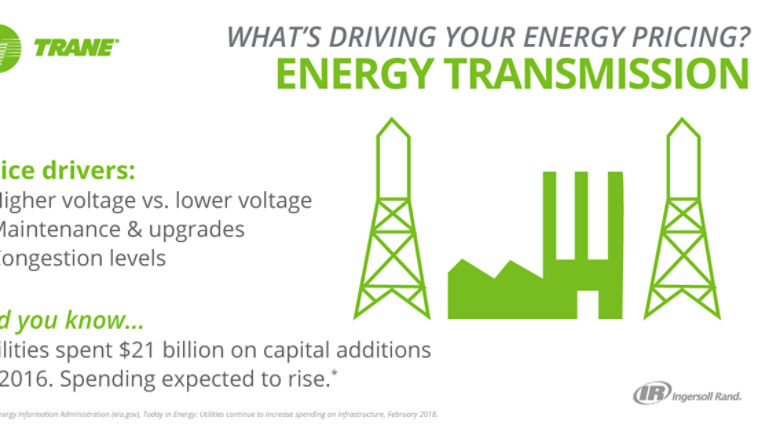Blog
Published: September 18, 2018
Power Bill 101: What’s Driving Your Price? Revealing the Secrets of Your Energy Bill
Electricity bills can be painful. Ask businesses about their operating expenses, and most will say that energy is in their top three. If the utilities in your state are regulated, look to optimize your utility rate schedule.
Power Bill 101: What’s Driving Your Price? Revealing the Secrets of Your Energy Bill.
September 18, 2018
Electricity bills can be painful. Ask businesses about their operating expenses, and most will say that energy is in their top three. What can be done to lower the cost of the electricity bills? If the utilities in your state are regulated, look to optimize your utility rate schedule. If you are operating in one of the 24 deregulated states, then you may be able to negotiate a better contract or switch to a different supplier with a more favorable pricing structure.
Energy supply-side analysis begins with your monthly electricity bill. The costs to generate, transmit and distribute energy to your facility are all there, even if they’re not immediately evident.

Energy Generation
Electricity is a secondary energy source created by converting another primary energy source. How much energy you’re using is measured in kilowatt hours (kWh), which equals the amount of energy you would use if you kept 1,000 watts, or a kilowatt (kW), running for an hour. kW = 1 kilowatt.
This is also how demand is measured. At any given moment, the demand your load is placing on the system can be measured in kilowatt hours. Simply multiply kilowatts by the time in hours to arrive at kWh. How much are you paying per kWh? The kWh price per unit can vary as frequently as every 15-minute interval. There are many factors which determine your price.
- Power basis: Coal, natural gas, nuclear, oil, wind, hydro or solar. Raw material costs are market driven.
- Capacity costs: During peak periods, utility companies sometimes have to buy additional capacity to reliably service their customers. Capacity costs can account for 15%-20% of your bill.
- Weather: Extreme conditions such as storms that cause outages, or heat waves that drive up demand.
- Geopolitical events: Events affecting the raw materials supply chain.

Energy Transmission
When we talk about the transmission system, we mean the big, high-voltage power lines that move electricity from generating stations across longer distances and state lines. Electricity transmission is regulated by federal agencies. Transmission rates, also called “tariffs,” cover the costs to operate the infrastructure reliability. Variability is related to several factors:
- Voltage: High voltage power is transmitted more efficiently with lower losses (and lower costs). Transmission at lower voltage is less efficient with higher losses (and higher costs).
- Upgrades or maintenance projects: Ancillary service costs paid to increase capacity or maintain reliability are shared by end users.
- Congestion: Rates increase when the lines are busiest due to high electricity demand.

Energy Distribution
Distribution may be handled by a municipal or cooperative utility, or an investor-owned company. Either way, it’s a name you’ll know because it is on your electric power bill. Energy distribution occurs through the web of smaller power lines running throughout communities, delivering electricity to end-user homes and businesses. There may be several reasons why distribution prices vary:
- On-peak vs. off-peak usage. Rates go up as demand increases.
- Seasonal variations. Costs may be higher in the summer air-conditioning months.
- Risk margin premium
- Local taxes and regulatory fees
As you can see, the choices you make when purchasing electricity can really affect costs. That’s why procurement strategies should be a part of every company’s holistic energy plan.
Trane® has a team of energy procurement specialists who understand the intricacies of the energy markets in every state, and based on our experience and average savings across customers in several industries we find that we’re able to leverage that knowledge to reduce energy costs by 10 – 15% in deregulated states.
Start the search: If you’d like Trane’s energy procurement specialists to take an in-depth look at your energy bill, sign up for a free energy assessment here.
